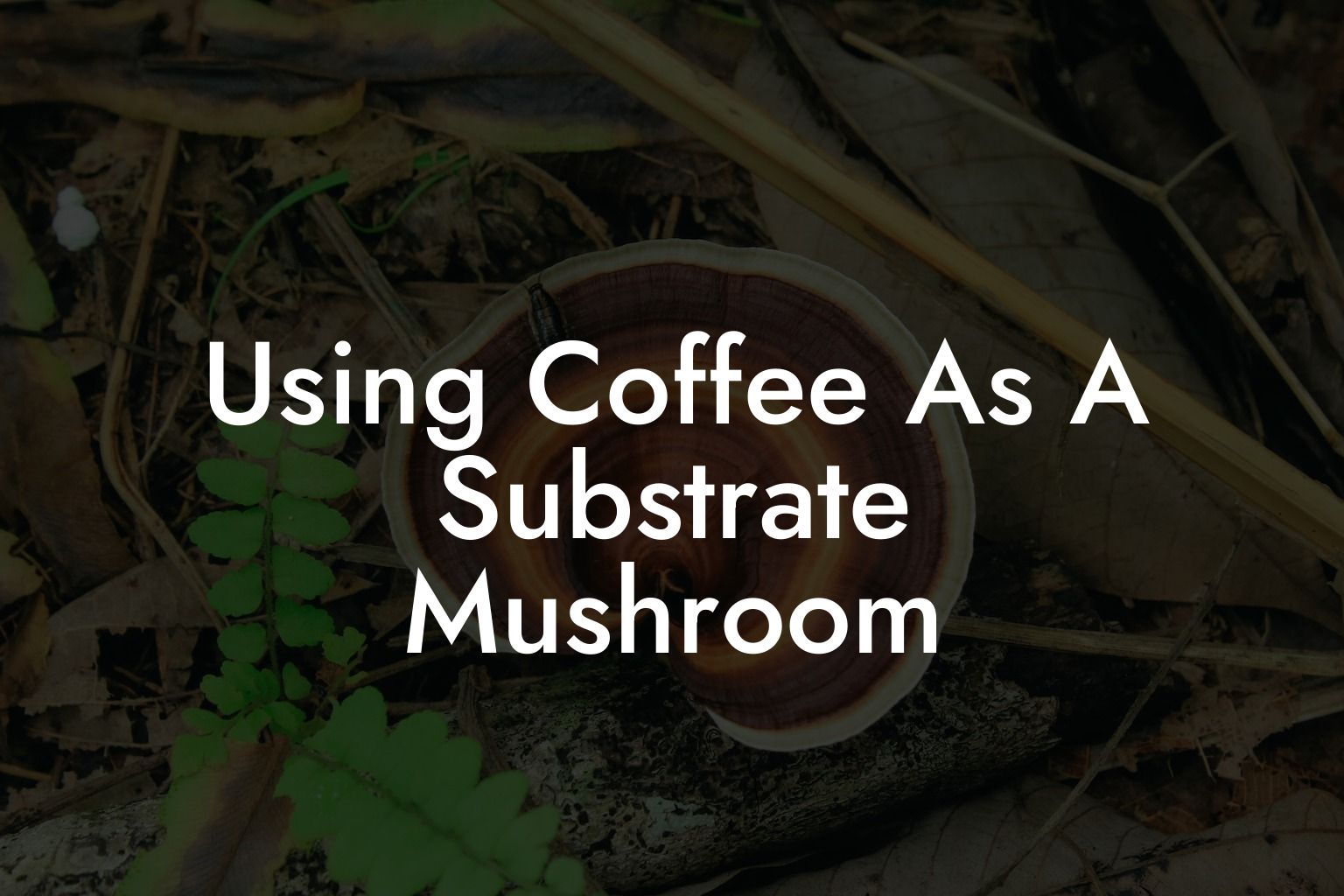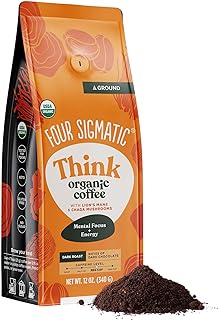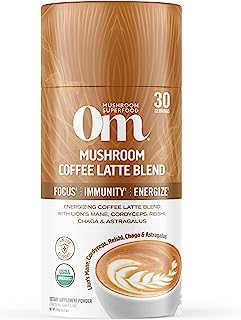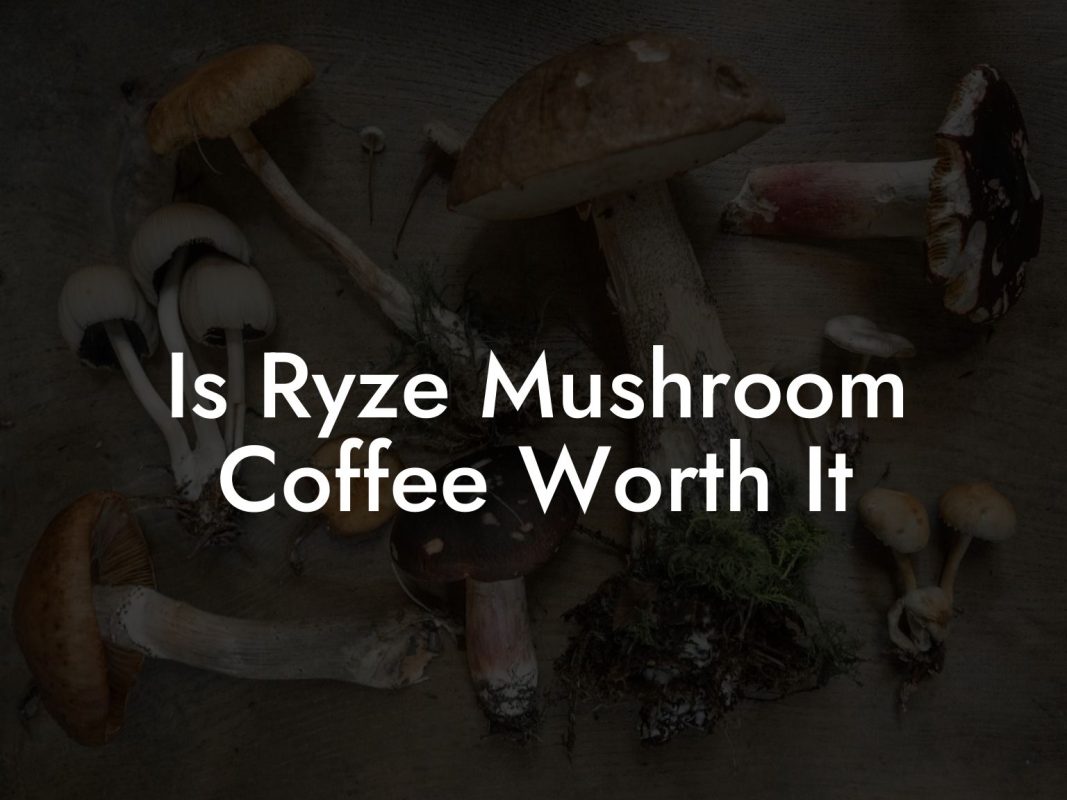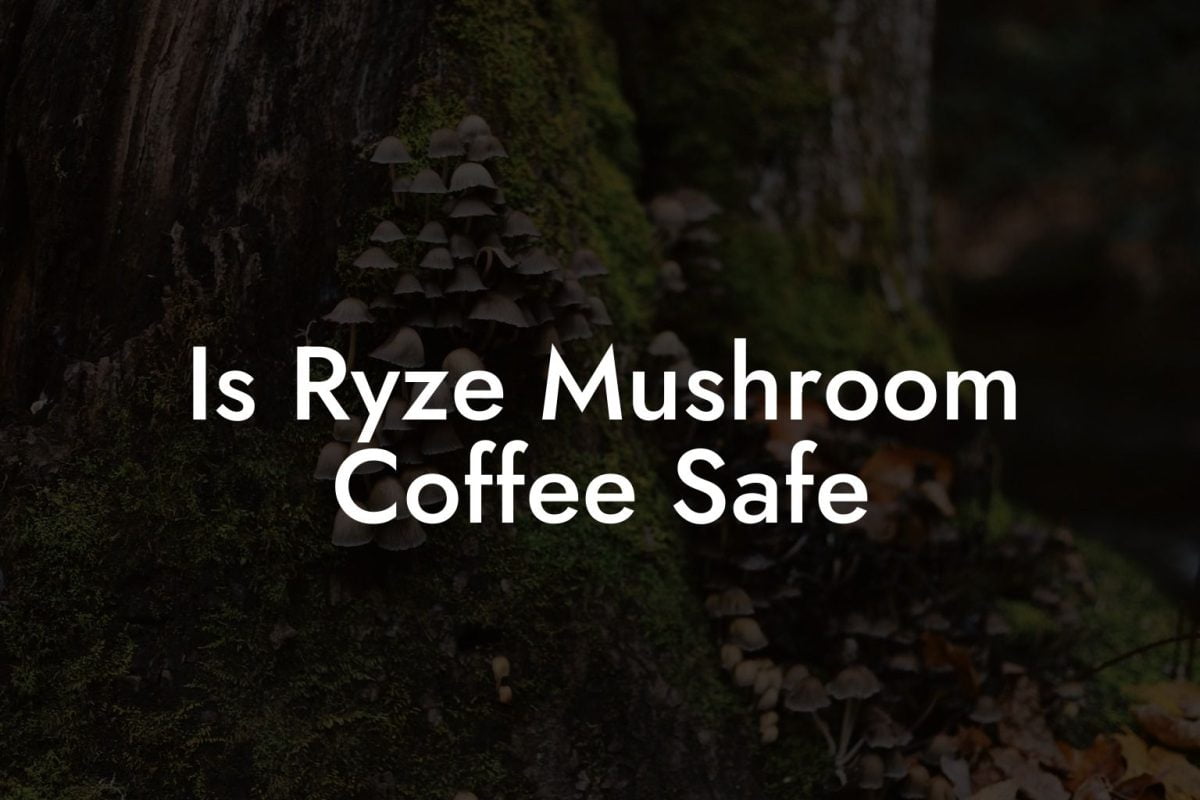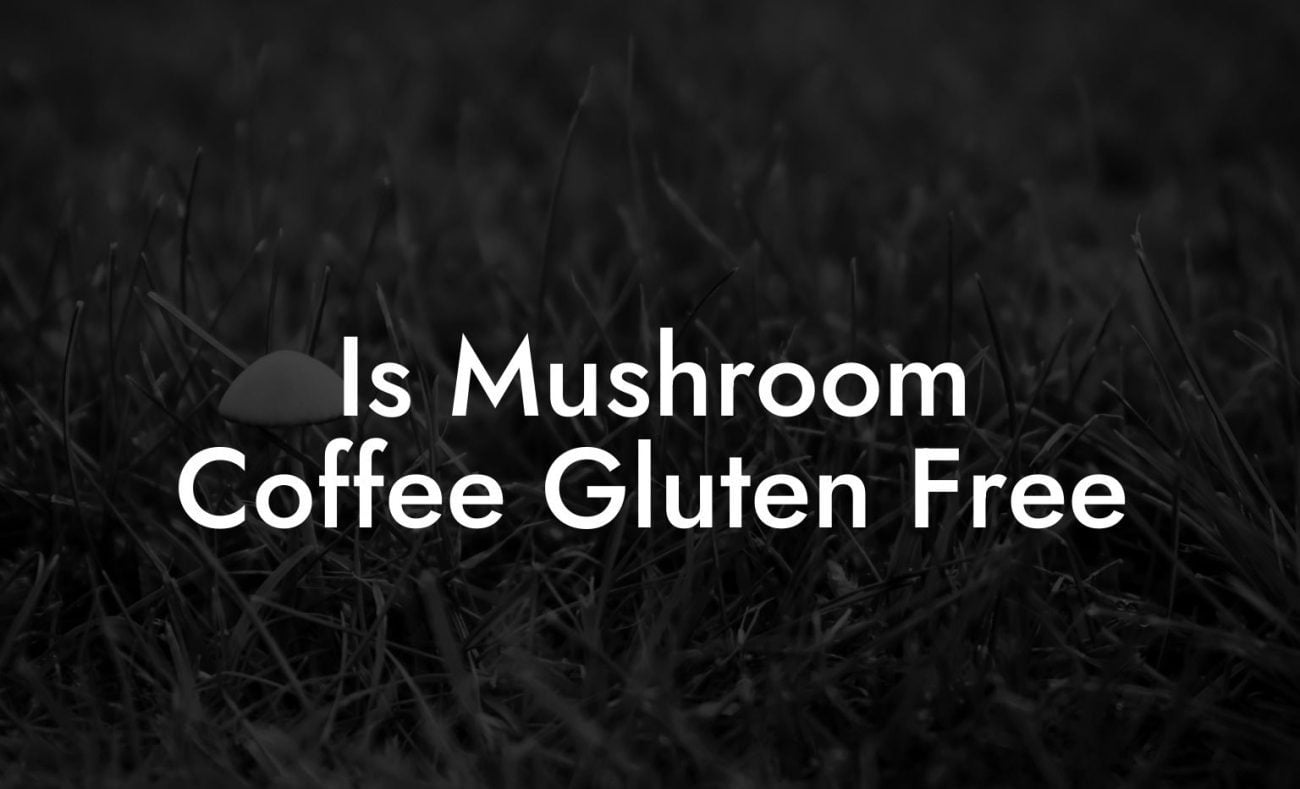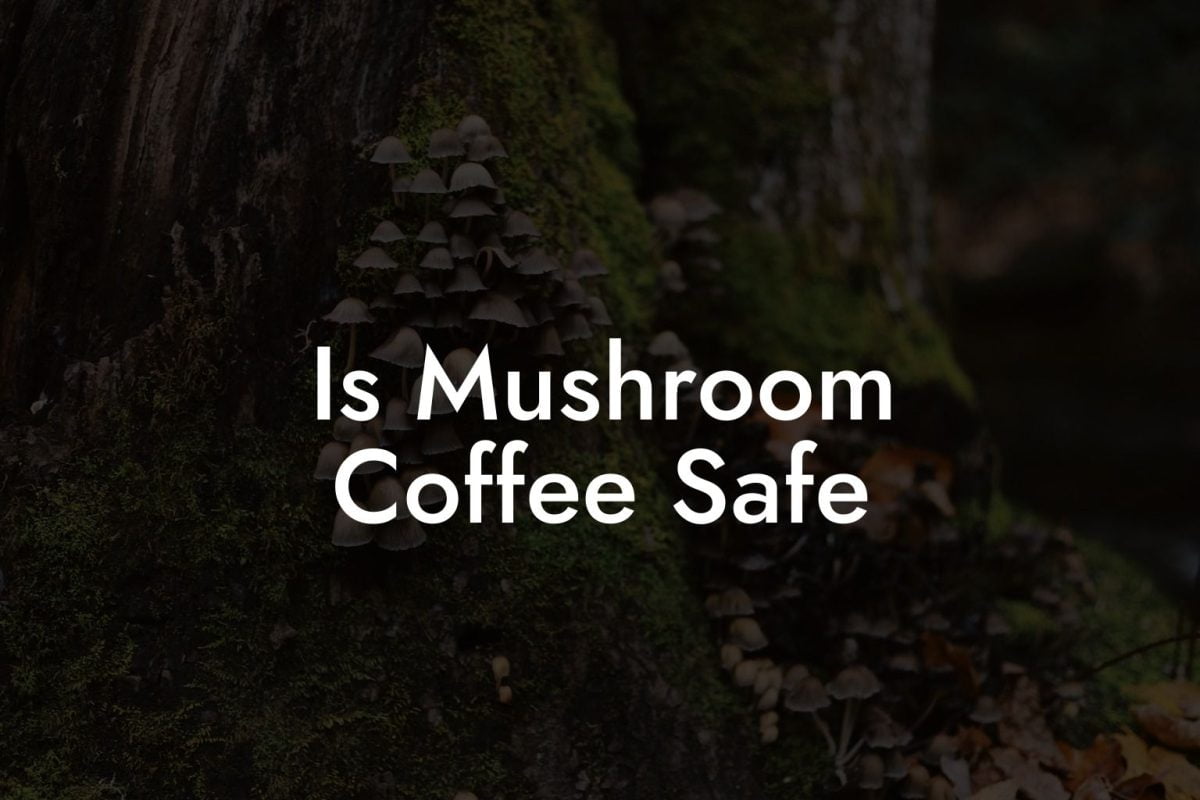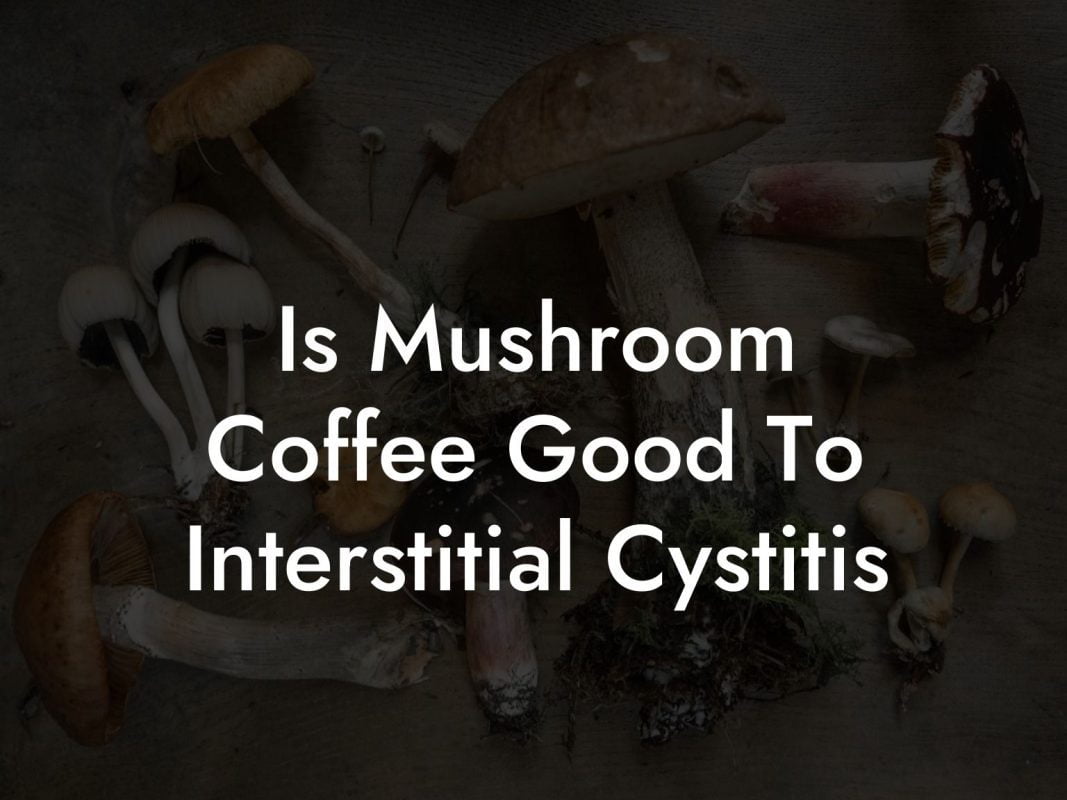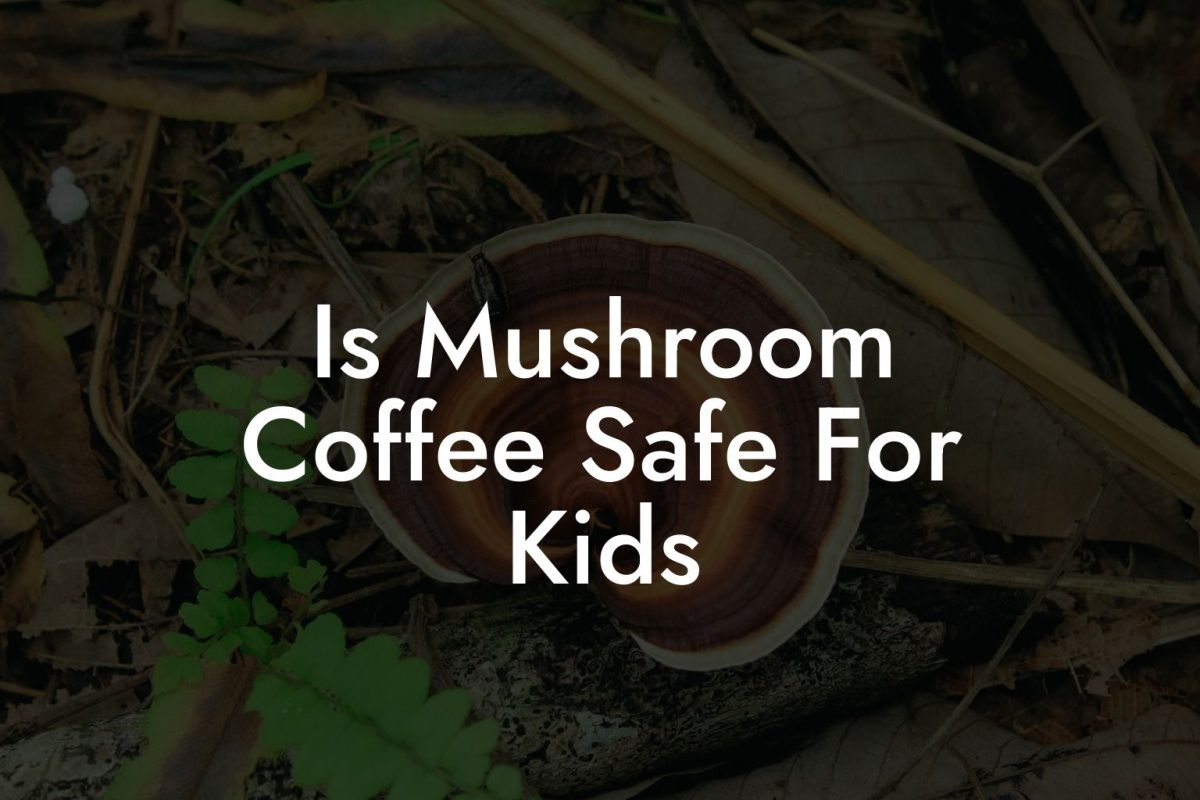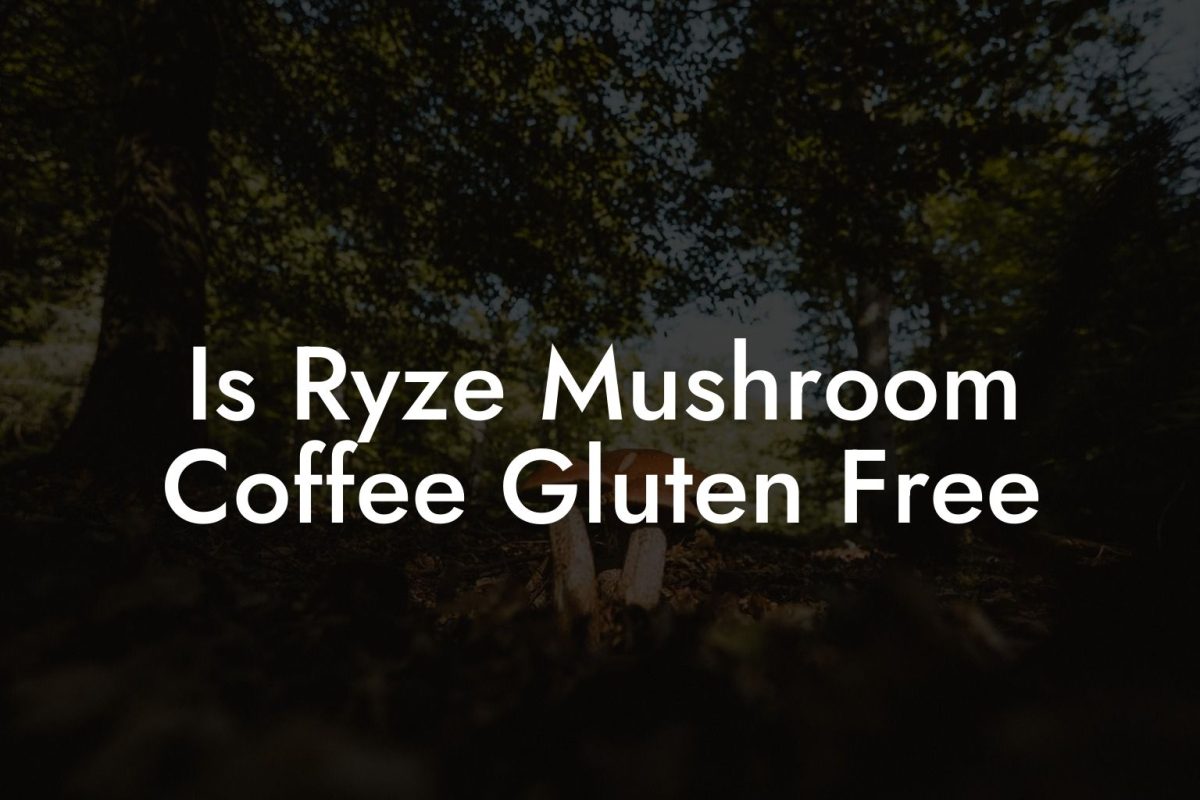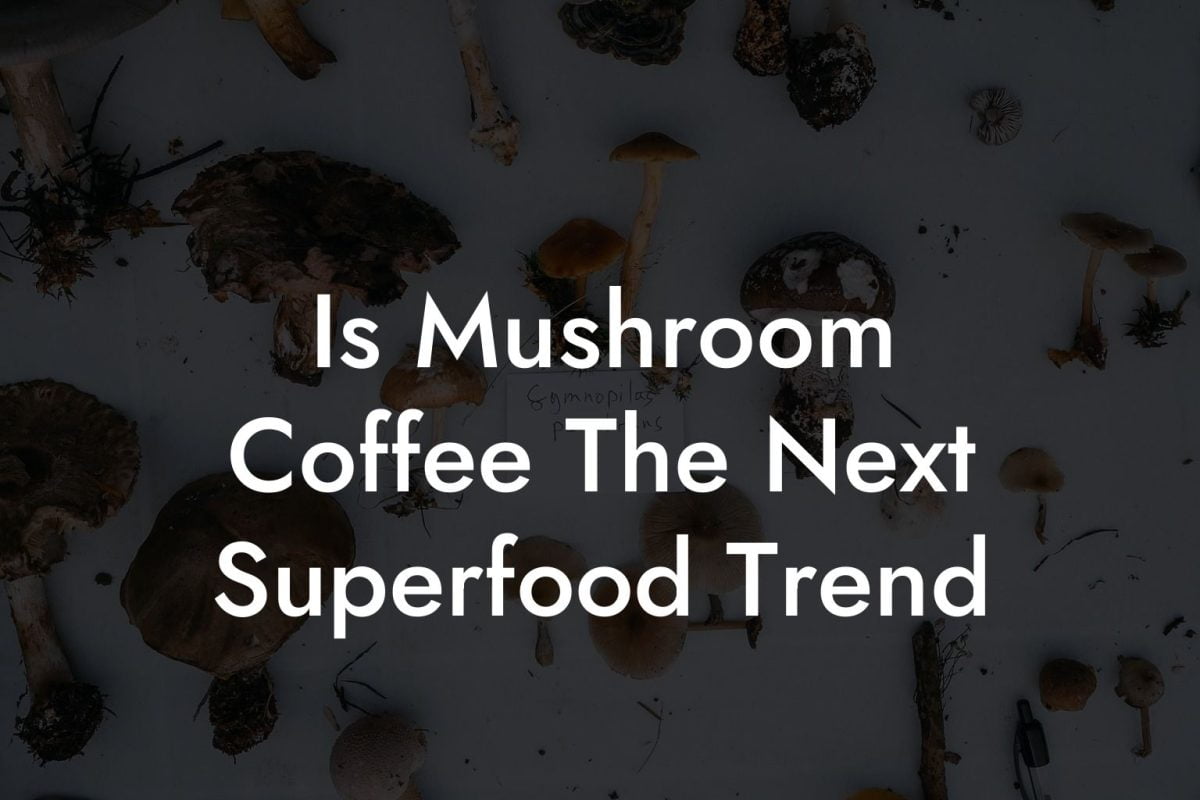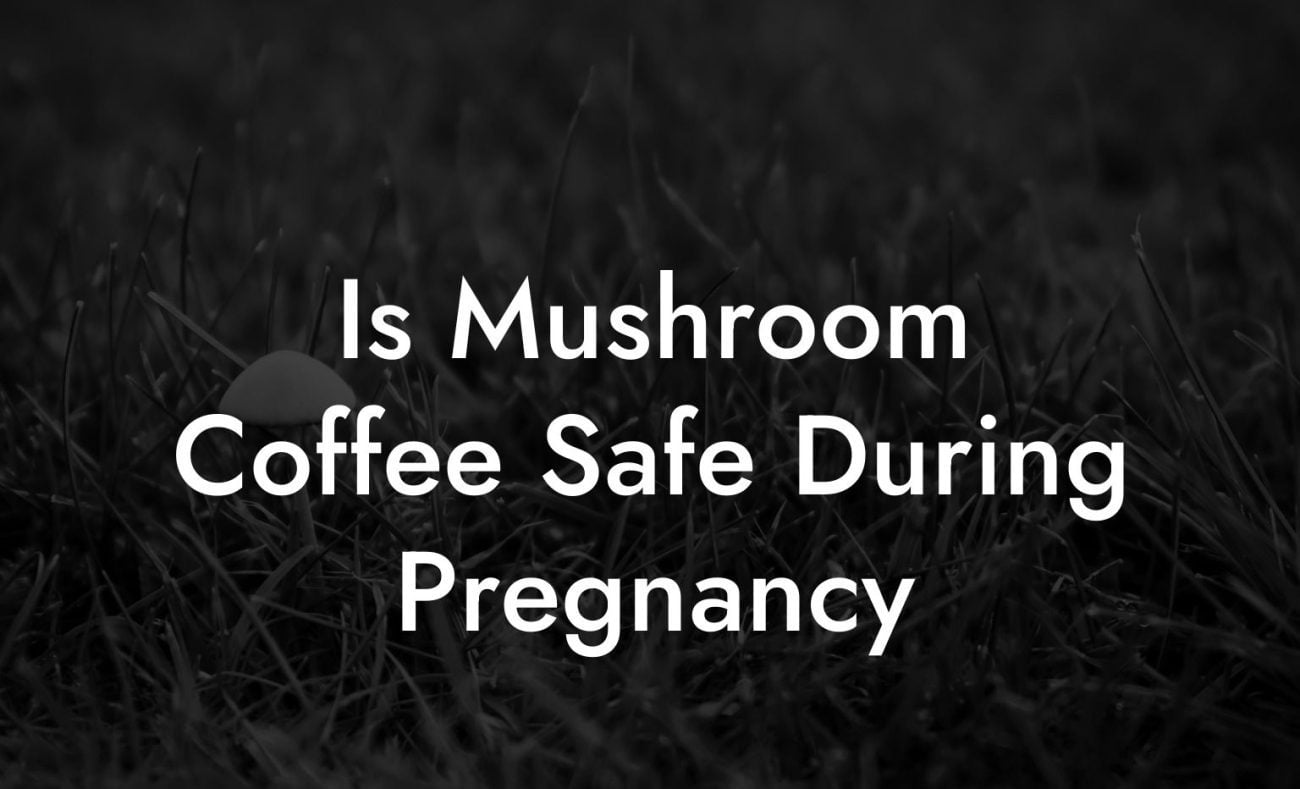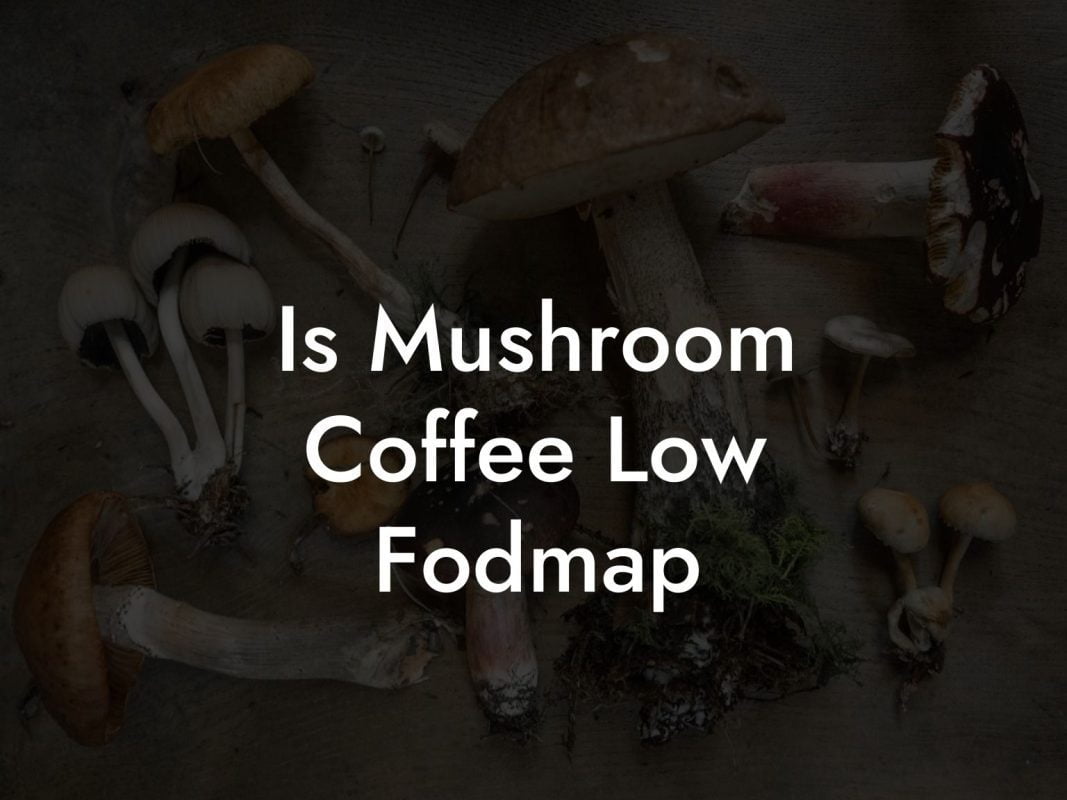Who would have thought that your fave morning brew could moonlight as the secret sauce for growing gourmet fungi? Imagine repurposing used coffee grounds to cultivate magic mushrooms (not the mind-bending kind, but the delicious, earthy, and nutrient-packed varieties perfect for mushroom coffee enthusiasts). This isn’t your typical kitchen hack, it’s a sustainable, eco-friendly revolution in urban gardening that’s buzzing with creativity and science alike. Ready to dive into the steamy world of coffee as a substrate for mushroom cultivation? Let’s brew up some knowledge and get growing!
Quick Links to Useful Sections
- The Buzz Behind Coffee Substrate Mushrooms
- The Science of Coffee Grounds as a Mushroom Substrate
- Sustainability Meets Urban Farming: Coffee Substrate in Action
- Decoding the Ultimate Coffee-to-Mushroom Transformation
- Step 1: Gathering Your Material
- Step 2: Sterilization and Preparation
- Step 3: Inoculation with Mushroom Spawn
- Step 4: Incubation
- Step 5: Fruiting
- Step 6: Harvesting and Enjoying
- Cultivating Coffee-Infused Mushroom Coffee: A Flavor Revolution
- Exploring the Benefits of Using Coffee as a Mushroom Substrate
- Common Challenges and How to Overcome Them
- Moisture Control
- Contamination Risks
- Temperature Fluctuations
- Patience is a Virtue
- Holistic Tips to Maximize Your Mushroom Harvest
- Community, Resources, and Your Next Steps
- Case Studies: Real-Life Brewed Successes
- Case Study 1: The Local Cafe Turned Urban Farm
- Case Study 2: From Kitchen Counter to Gourmet Delicacy
- Case Study 3: The Sustainable Start-Up
- DIY Troubleshooting and Success Hacks
- Issue: Slow or Stalled Mycelial Growth
- Issue: Contamination Crashes the Party
- Issue: Uneven Fruiting
- Merging Traditional Techniques with Modern Innovations
- Integrative FAQs on Using Coffee as a Substrate for Mushrooms
- Your Next Steps Towards a Fungi-Fueled Future
The Buzz Behind Coffee Substrate Mushrooms
In recent years, the quest for sustainability and urban farming innovation has sparked a renaissance in repurposing everyday leftovers. Coffee grounds, typically destined for the trash or compost pile, are now getting a second lease on life as a nutrient-dense substrate ideal for mushroom cultivation. This breakthrough has attracted eco-warriors, biohackers, and Gen-Z eco-enthusiasts alike, a perfect cocktail for anyone who loves saving the planet while sipping on their mushroom coffee.
So, what exactly is a "substrate" in mushroom cultivation? In simple terms, a substrate provides the necessary nutrients and structure for mushroom mycelium (the vegetative growth of fungi) to thrive. Coffee grounds are rich in nitrogen, a crucial element for mycelial growth, and their fibrous structure offers an ideal habitat for mushrooms to develop. The result is a symbiotic relationship where waste meets wonder in a cycle of environmental efficiency and delicious produce.
Think of your coffee as more than just a wake-up call; it’s a powerhouse ingredient in creating a sustainable ecosystem right in your kitchen. From recycling organic waste to producing nutrient-packed mushrooms, using coffee as a substrate is an innovation that bridges the gap between sustainability, fun DIY projects, and some seriously cool science.
The Science of Coffee Grounds as a Mushroom Substrate
Underneath the enticing aroma of roasted coffee lies a treasure trove of nutrients waiting to be unlocked. The science behind using coffee grounds as a substrate is as fascinating as it is practical. When you brew a cup of coffee, the process extracts most of the soluble compounds, yet leaves behind a fibrous, nutrient-rich material. This leftover, rich in nitrogen and other essential minerals, provides an ideal environment where mycelium can perform its magic.
Looking For The Best Mushroom Coffee? You'll Love These:
The process begins when the spores of your chosen mushroom variety come into contact with the coffee substrate. As the mycelium spreads, it secretes enzymes that break down the organic matter in the coffee. In this biological alchemy, complex compounds are decomposed into simpler molecules, which the mycelium then absorbs. This metabolic dance not only nourishes the developing fungus but also transforms the spent coffee into a symbiotic, living medium.
Scientific studies and experimental cultivation methods have shown that coffee grounds are particularly effective for growing species like oyster mushrooms, shiitake, and even some gourmet gourmet medicinal mushrooms. With coffee as a growing medium, these fungi can often develop faster and yield a richer harvest compared to traditional substrates like straw or hardwood sawdust.
What’s even cooler? The residual caffeine content in the used grounds might even give the mushrooms a slight metabolic boost, though don’t expect them to start brewing espresso on their own, the mycelium sticks to its fungi roots.
Sustainability Meets Urban Farming: Coffee Substrate in Action
Sustainability isn’t just a buzzword, it’s a lifestyle, especially for the eco-conscious Gen-Z and millennial crowd. Imagine this: every morning, as you gulp down your artisanal latte, you’re also setting the stage for a mini urban farm right in your apartment. Coffee grounds are a renewable resource, and by redirecting them from waste to a productive substrate, you’re championing organic waste recycling and lowering your ecological footprint.
Many cities are witnessing grassroots movements where local coffee shops partner with urban gardeners to recycle spent coffee grounds. This not only reduces waste but also creates a community vibe that’s as warm and inviting as your favorite neighborhood café. In these creative hubs, coffee substrate mushrooms are a living testament to how small changes, like repurposing coffee waste, can lead to significant environmental benefits.
And let’s not forget the flavor factor! Mushrooms grown on coffee grounds carry a subtle, roasted undertone that pairs exceptionally well with mushroom coffee blends. This unique taste profile offers beverage enthusiasts a whole new way to enjoy their daily caffeine fix, merging the robust flavor of coffee with the earthy, umami-rich notes of cultivated mushrooms.
Decoding the Ultimate Coffee-to-Mushroom Transformation
Ready to roll up your sleeves? Let’s break down the process of turning your used coffee grounds into a thriving mushroom haven. Whether you’re a budding urban farmer or a biohacker with a penchant for sustainable DIY projects, this step-by-step guide will lead you through the fascinating transformation.
Step 1: Gathering Your Material
Start with clean, used coffee grounds. If you’re a regular at your local coffee shop, ask if they’re willing to donate their spent grounds. The freshest grounds work best, so ideally, collect them daily. Plus, using organic coffee minimizes the risk of pesticides interfering with your mushrooms’ growth.
Step 2: Sterilization and Preparation
Before the magical mycelium can flourish, the substrate needs to be sanitized to eliminate unwanted bacteria and competing fungi. There are a couple of ways to do this. You can pasteurize the coffee grounds by heating them to around 160°F (70°C) for an hour, or if you have access to a pressure cooker, sterilize them to be on the safe side.
Step 3: Inoculation with Mushroom Spawn
Once your coffee grounds are sterilized and cooled, it’s time to introduce the mushroom spawn. Spawn refers to the mycelium that’s been pre-cultivated on a grain-based medium. Mix the spawn thoroughly with the cooled coffee grounds in a clean environment. This is the moment where science meets art, your substrate becomes a canvas for nature’s own fungus fingerprint.
Step 4: Incubation
Transfer the inoculated substrate into a container with small holes for ventilation. Place it in a dark, warm environment (ideally around 68°F to 77°F or 20°C to 25°C) to let the mycelium colonize the substrate. This phase can take anywhere from 10 to 21 days depending on the mushroom species and environmental conditions. During this period, keep an eye out for rapid mycelial growth, white, thread-like strands spreading through the coffee grounds signal that you’re on the right path.
Step 5: Fruiting
After colonization, it’s time to introduce fresh air and light to kickstart the fruiting of mushrooms. Transfer the colonized substrate to a fruiting chamber or create an improvised setup using a clear plastic bag with a few small slits. Maintain high humidity levels (above 80%) and a temperature between 60°F-70°F (15°C-21°C) to encourage the formation of mushroom buds. Soon, you’ll see small pins forming, and before you know it, you’ll be harvesting fully-grown mushrooms!
Step 6: Harvesting and Enjoying
When the mushrooms have developed a full cap and are easily detachable from the substrate, it’s harvest time. Gently twist and pull the mushrooms out to avoid damaging the mycelium. Not only is this a fulfilling DIY project, but you can also use your freshly grown mushrooms in gourmet recipes or even for making mushroom-infused coffee beverages.
With patience, care, and a pinch of experimentation, you transform what could be waste into a fountain of fresh, sustainable produce. Plus, the joy of cultivating your own food and witnessing the transformative power of nature? That, dear reader, is priceless.
Cultivating Coffee-Infused Mushroom Coffee: A Flavor Revolution
Mushroom coffee is the latest trend that fuses the health benefits of medicinal mushrooms with the beloved comfort of coffee. But what happens when you use coffee substrate mushrooms in your brew? The result is a complex, layered flavor profile that marries the rich, roasted notes of coffee with the deep, earthy nuances of mushrooms. It’s a match made in sustainability heaven.
The popularity of mushroom coffee stems from its potential health benefits, ranging from immune support to enhanced focus and reduced inflammation. When your mushrooms are grown on coffee grounds, they inherit residual compounds from the coffee, creating a unique synergy. It’s like drinking a beverage that not only wakes you up but also gives you a natural boost of antioxidants and beneficial bioactive compounds.
Plus, let’s be honest, exploring innovative ways to brew your coffee is a perfect conversation starter. Whether you’re a health nut, a foodie, or the resident trailblazer among your friends, mushroom coffee cultivated on recycled coffee grounds is a testament to forward-thinking, environmentally conscious consumption.
Exploring the Benefits of Using Coffee as a Mushroom Substrate
Beyond the sheer cool-factor and environmental perks, using coffee as a substrate for mushrooms offers a multitude of benefits that appeal to both the budding urban farmer and the eco-savvy Gen-Z consumer:
- Eco-Friendly Approach: Repurposing used coffee grounds cuts down on waste and reduces landfill mass, contributing to a cleaner, greener planet.
- Nutrient-Rich: Coffee grounds are loaded with nitrogen and other minerals that support vigorous mycelial growth, ensuring a healthy, productive mushroom harvest.
- Cost-Effective: Instead of investing in expensive sterilized substrates, you can harness a readily available, renewable resource to cultivate mushrooms.
- Easy Accessibility: With local coffee shops and your own at-home brewing habits, used coffee grounds are abundant and free.
- Unique Flavor Profiles: Mushrooms grown on coffee retain a hint of roasted coffee’s complex aromatics, which can elevate the taste of mushroom coffee and culinary dishes.
- Community Impact: Initiatives that celebrate recycling and urban farming can create community-based projects, inspiring collective effort for sustainable living.
These benefits underscore a larger trend of finding ingenious, practical ways to integrate eco-friendly practices into daily life. Using coffee as a substrate isn’t just a quirky experiment, it’s a tangible step toward reducing waste and promoting a circular economy.
Common Challenges and How to Overcome Them
Like any trailblazing venture into the realm of DIY agriculture, working with coffee substrate does come with its hurdles. But fear not, armed with a little know-how and a dash of determination, you can maneuver around these challenges like a pro.
Moisture Control
Too dry? Too wet? Nailed it! Mushroom mycelium thrives in a goldilocks zone of moisture. Coffee grounds can sometimes be inconsistent in water content. The trick is to monitor the substrate’s humidity and adjust by lightly misting if dry, or adding extra ventilation if it becomes soggy. A hygrometer can be an invaluable tool in achieving that perfect moisture balance.
Contamination Risks
One of the biggest threats to mushroom cultivation is contamination from mold or bacteria. Sterilizing your coffee grounds carefully and working in a clean environment is crucial. Additionally, using quality mushroom spawn and maintaining proper incubation conditions can help mitigate unwelcome microbial guests.
Temperature Fluctuations
Temperature plays a key role in the success of the colonization and fruiting phases. Keep your growing area stable, avoid drastic shifts that might stress the mycelium. If you live in a place with fluctuating temperatures, consider insulating your fruiting containers or using a simple thermostat-controlled incubator.
Patience is a Virtue
Perhaps the most challenging aspect is simply waiting. Mushroom cultivation requires time, and while the process is mostly laid-back, it does demand a level of patience. Embrace this downtime as an opportunity to learn more about the intricacies of mushroom biology or to explore other sustainable living projects.
Holistic Tips to Maximize Your Mushroom Harvest
To fully optimize your coffee substrate mushroom cultivation, consider these holistic tips that blend technical know-how with a sprinkle of creative ingenuity:
- Utilize Natural Light Cycles: Mimic the natural day-night cycle in your growing setup. Even minimal ambient light can trigger fruiting and improve the overall quality of your mushrooms.
- Experiment with Additives: Some cultivators mix in supplemental nutrients like wheat bran or sawdust to vary the texture and nutrient profile of the substrate. Try different blends to see which yields the best results for your mushroom variety.
- Document Your Journey: Keep a cultivation journal. Not only is it a great way to track progress, but sharing your journey online can inspire a community of like-minded urban farmers and eco-innovators.
- Create a Microclimate: If you’re working in an apartment, transform a small corner into your dedicated mushroom-growing oasis. A mini fruiting chamber set up in a closet or under a table can work wonders.
- Stay Updated with Research: The field of mycology is rapidly evolving. Keeping an eye on the latest research and trends can be both educational and inspiring as you refine your methods.
By integrating these strategies, you create an environment that’s not only conducive to robust mushroom growth but also transforms the cultivation process into a vibrant, hands-on learning experience.
Community, Resources, and Your Next Steps
One of the most exciting aspects of exploring coffee substrate mushrooms is the vibrant, global community dedicated to sustainable growing and urban farming. From online forums and social media groups to local workshops and eco-friendly meet-ups, there’s a wealth of resources available for both newbies and seasoned cultivators.
Join communities on platforms like Reddit, Facebook, and Instagram, search for hashtags like #MushroomCultivation, #CoffeeSubstrate, and #UrbanFarming, to connect with fellow enthusiasts who are more than happy to share tips, troubleshoot challenges, and celebrate each successful harvest.
If you’re itching to dive deeper, consider subscribing to mycology newsletters, joining local urban gardening clubs, or even enrolling in online courses dedicated to sustainable agriculture. The more you immerse yourself, the more you’ll discover the endless possibilities of blending coffee culture with mushroom mastery.
Whether you plan to turn your apartment into a green haven or simply experiment with a small DIY project, your journey into this innovative realm promises not only a bountiful harvest but also the satisfaction of knowing that you’re contributing to a circular, eco-friendly lifestyle.
Case Studies: Real-Life Brewed Successes
Nothing speaks louder than real-life stories of transformation. Here are a few inspiring case studies that prove using coffee as a substrate isn’t just a quirky experiment, it’s a potent tool for sustainable cultivation and innovation.
Case Study 1: The Local Cafe Turned Urban Farm
In one bustling city neighborhood, a popular local café partnered with a community garden initiative. Instead of discarding their plentiful coffee grounds, the café sent them to a nearby urban farm. The coffee substrate proved perfect for cultivating oyster mushrooms, which were later sold at local farmers’ markets and even featured in the café’s very own mushroom coffee blend. This innovative partnership not only reduced waste but also provided fresh, locally grown produce while boosting community engagement.
Case Study 2: From Kitchen Counter to Gourmet Delicacy
Meet Alex, a self-proclaimed biohacker and coffee aficionado. Fascinated by the idea of sustainability and intrigued by the promise of mushroom-infused coffee, Alex started growing mushrooms on used coffee grounds right on the kitchen counter. With some experimentation and a few online forum testimonials for backup, Alex perfected a method that produced a consistent, high-quality crop of shiitake mushrooms. The resulting mushrooms were celebrated for their unique, slightly roasted flavor, eventually earning a spot in Alex’s much-raved-about mushroom coffee recipes.
Case Study 3: The Sustainable Start-Up
A group of college friends, passionate about sustainability and innovative food systems, launched a start-up that embraced the concept of coffee substrate mushroom cultivation. They sourced used coffee grounds from campus cafés and powered their research with local support and crowdsourcing. Their project not only yielded impressive harvests of medicinal mushrooms but also attracted media attention, inspiring similar initiatives across campuses worldwide.
These cases highlight a recurring theme: turning everyday waste into something extraordinary. Whether it’s boosting local economies, fostering community relationships, or simply finding joy in culinary creativity, the potential of coffee substrate mushrooms is as vast as it is exciting.
DIY Troubleshooting and Success Hacks
Even the most enthusiastic cultivators encounter bumps along the road. Here are some common issues and clever hacks to keep your coffee substrate mushroom journey brewing smoothly:
Issue: Slow or Stalled Mycelial Growth
A sluggish start might be due to low moisture levels or a suboptimal incubation temperature. Try adjusting by misting the substrate lightly and ensuring it’s kept in a warm, stable environment. Investing in a simple heat mat can work wonders when your ambient conditions are cooler than desired.
Issue: Contamination Crashes the Party
Contaminants like mold can quickly derail your harvest. Always double-check that your coffee grounds are properly sterilized and that your workspace is sanitized. If contamination does occur, remove affected batches immediately and consider using a higher concentration of spawn, which might help outpace the unwanted microbes.
Issue: Uneven Fruiting
If you notice that mushrooms are forming unevenly or that only patches of your substrate are fruiting, it might be a ventilation issue. Increasing airflow with a small fan or reconsidering your fruiting chamber setup can balance humidity and temperature, leading to more uniform growth.
Remember, every cultivation journey comes with its own set of surprises. Embrace experimentation, share your findings with online communities, and always approach challenges as opportunities to learn (and maybe even laugh a little along the way).
Merging Traditional Techniques with Modern Innovations
The world of mushroom cultivation is rapidly evolving thanks to technology and creative thinking. Traditional methods of growing mushrooms on coffee substrates are being enhanced with modern innovations that boost efficiency and yield.
Many enthusiasts are now integrating smart sensors to monitor humidity, temperature, and CO₂ levels inside their fruiting chambers, ensuring the evolutionary growth of mycelium isn’t left to chance. Mobile apps, accessible even to the most tech-savvy Gen-Zers, help track progress, offer timely reminders for misting, and even provide a platform for troubleshooting shared experiences within a global community of urban farmers.
As this space continues to evolve, the merge between time-tested organic methods and modern tech innovations is opening up endless possibilities. Whether you’re a DIY rookie or a seasoned urban cultivator, embracing these advancements can elevate your coffee substrate mushroom journey to unexpected heights.
Integrative FAQs on Using Coffee as a Substrate for Mushrooms
We know you might have questions swirling in your mind about this quirky, sustainable practice. Here are some of the most frequently asked questions, served hot and ready:
1. What exactly is a coffee substrate, and why is it ideal for mushroom cultivation?
A coffee substrate is simply used coffee grounds repurposed as a growth medium. It’s rich in nitrogen and other nutrients, making it a fertile ground for mushroom mycelium to thrive.
2. Which mushroom varieties grow best on coffee grounds?
Oyster mushrooms, shiitake, and some medicinal varieties flourish on coffee substrate. Experimenting with different strains can lead to surprising flavor profiles and growth patterns.
3. Do I need special equipment to grow mushrooms on coffee grounds?
Not at all! Most of the process requires basic kitchen items, a container, a reliable heat source for sterilization, and some creativity. For tech enthusiasts, simple smart sensors can further optimize your setup.
4. How important is temperature and moisture control?
Super important! Maintaining the right humidity and temperature levels (around 68°F-77°F during incubation and 60°F-70°F for fruiting) is crucial for robust mycelial growth and even fruiting.
5. Can I experiment with other organic waste as substrates?
Absolutely. While coffee grounds are popular for their nutrient content and availability, other organic waste materials like tea leaves, spent grains, or even cardboard have been used successfully in mushroom cultivation.
6. Is there a risk that the residual caffeine in coffee will affect my mushroom growth?
Residual caffeine levels are generally low and usually don’t hinder growth, in fact, some cultivators believe it might even give a slight metabolic boost to the mycelium!
7. How long does the entire process typically take?
From inoculation to harvest, the process typically takes anywhere from 3 to 6 weeks depending on the mushroom species and cultivation conditions.
8. Can I use spent coffee grounds from any type of coffee?
Organic, pesticide-free coffee grounds are best, but in general, any used coffee grounds can serve as an effective substrate as long as they’re properly prepared and sterilized.
9. What makes mushroom coffee different from regular coffee?
Mushroom coffee combines traditional coffee with extracts or infusions of functional mushrooms. The result is a beverage with enhanced health benefits like improved focus, reduced inflammation, and added antioxidants.
10. Where can I join a community or find more resources on this topic?
Check out online forums, social media groups, and local urban gardening workshops. Websites like Instructables, Reddit’s r/mycology, and various Facebook groups are a great starting point.
Your Next Steps Towards a Fungi-Fueled Future
With a steaming cup of coffee in one hand and a container of nutrient-packed coffee grounds in the other, you’re now ready to join the revolution of sustainable, artisanal mushroom cultivation. Each step you take, from sterilizing your substrate to harvesting your very own mushrooms, not only reduces waste but also emboldens you to experiment with a process that is as scientifically fascinating as it is environmentally impactful.
Embrace the notion that daily routines can be reimagined into innovative, earth-friendly practices. Whether you’re a curious urban gardener or a seasoned sustainable living advocate, using coffee as a substrate opens up a world of opportunity to blend creativity, sustainability, and some seriously good coffee-mushroom magic.
Now’s the time to share your journey with friends, join online communities, and discover even more resources to refine your craft. Experiment, document your trials, and be part of a growing movement that’s turning everyday routines into eco-adventures. Your path to a fungi-fueled future is just a brew away, sip, grow, and thrive!
Looking For The Best Mushroom Coffee? You'll Love These:
Useful Interruption: Dive deeper into the world of Mushroom Coffee with our most popular sections. If there is anything you think is missing or anything you would love for us to write about, just give us a shout.
- Mushroom Coffee Equipment & Product Reviews
- Mushroom Coffee Recipes & Creative Variations
- Mushroom Coffee Guides & Troubleshooting
- Mushroom Coffee Brewing & Preparation Techniques
- Model Rocket Advanced Rocketry & Innovations
- Mushroom Coffee Fundamentals
- Model Rocket Equipment Reviews & Digital Tools
- Mushroom Coffee Health Benefits & Wellness
- Mushroom Coffee Mycology & Scientific Insights
- Mushroom Coffee Community, Lifestyle & Engagement
I tried mushroom coffee this morning and told my friend, "This brew is spore-tacular!" He shot back, "Guess that's why it's such a cap-tivating way to kickstart your day!"

